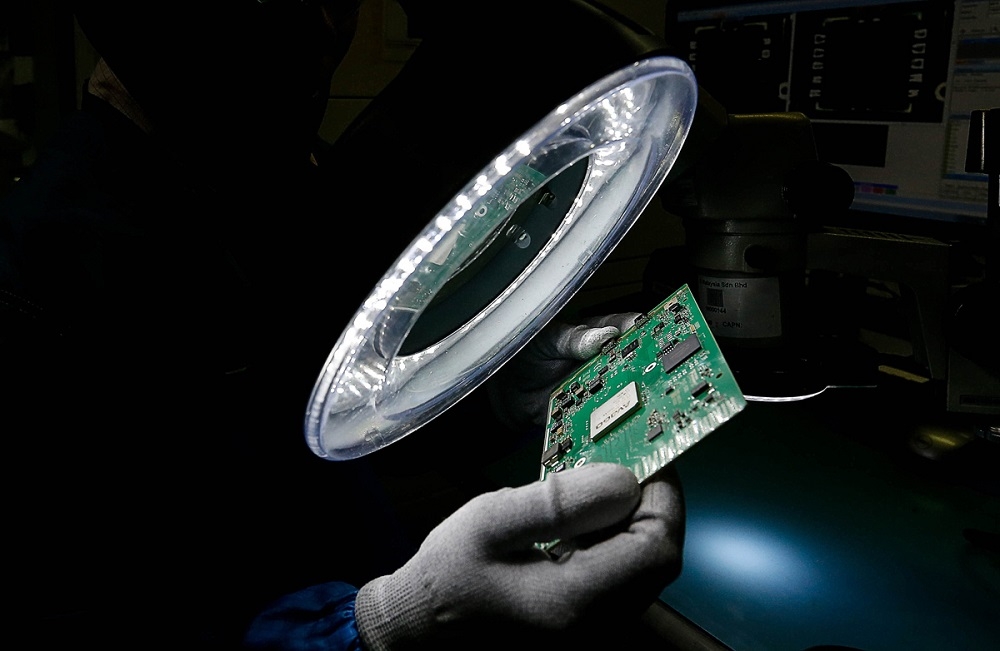MAR 30 — Prime Minister Datuk Seri Anwar Ibrahim yesterday launched the National Semiconductor Strategy (NSS) during his speech at the Semicon Southeast Asia 2024. This initiative should be applauded to leapfrog the nation’s semiconductor industry to be the top globally.
Looking at history, Malaysia’s venture into semiconductor industry began in the 1970s, driven by ambitious government initiatives aimed at diversifying the economy.
Over the decades, the nation’s semiconductor industry stands at the forefront of economic transformation, poised to become a global powerhouse.
With its strong presence in chip assembly, packaging, testing, and electronics manufacturing services (EMS), Malaysia has successfully transformed from a predominantly agriculture-based economy in the 1970s, to a more diversified economic structure.
The electrical and electronics sector comprises about 7 per cent of Malaysia’s GDP, with semiconductor devices and electronic integrated circuits alone making up a quarter of total exports, totalling RM387 billion in export value in 2022.

Today, Malaysia is recognised as the world's sixth-largest semiconductor exporter, commanding 13 per cent of the global market for semiconductor packaging, assembly, and testing and supplying 20 per cent of the US's annual semiconductor imports.
Nevertheless, as time goes by neighbouring countries especially Vietnam and Indonesia have aggressively been positioning themselves to be new hubs for the semiconductor industry in this region by providing lucrative incentives for investors.
In this regard, the recent effort and policy announced by Prime Minister Datuk Seri Anwar Ibrahim is the right move at the right time to boost the semiconductor industry, allowing the country to recover its competitive edge against neighbouring countries.
More important it is clearly stated that the country now has to move steps ahead by focusing on front-end process and high value-added activities especially in research and development (R&D), IC design and wafer fabrication, and not merely rely on back-end value chains that involve assembly and testing as well as EMS.
Based on a report by SEMI, the global industry association representing the electronics manufacturing and design supply chain, there are over 70 fabs globally, with only eight located in South-east Asia.
Therefore, by providing an allocation of RM25 billion, the nation will gain the upper hand to lure the big players such as Taiwan Semiconductor (TSMC) and Samsung to establish a pure foundry fab in Malaysia which will bring a large spillover to the people.
On top of that, this initiative should be lauded as it also gives attention to domestic investment by targeting to establish 10 Malaysian companies in design and advanced packaging with revenues between RM1 billion and RM4.7 billion, and 100 semiconductor-related companies with revenues around RM1 billion. It is certainly a good move to encourage local companies to improve their own technologies and capabilities and be comparable with foreign MNCs.
Last but not least, Malaysia needs to invest more in STEM education in its schools and universities, as well as technical and vocational training, to prepare a more robust talent pipeline.
Alongside the efforts to move up the value chain in front-end and high value added semiconductor activities, we need to address long-standing issues in the sector, including the brain drain and mismatch problem between industries and universities.
Therefore, by training and upskilling 60,000 high-skilled local engineers as stipulated at the headline targets, it will mitigate the talent shortage issue effectively.
*The writer currently works as Senior Manager at InvestPerak, Malaysia and serves as Adjunct Lecturer at University Technology Petronas.
**This is the personal opinion of the writer or publication and does not necessarily represent the views of Malay Mail.





















